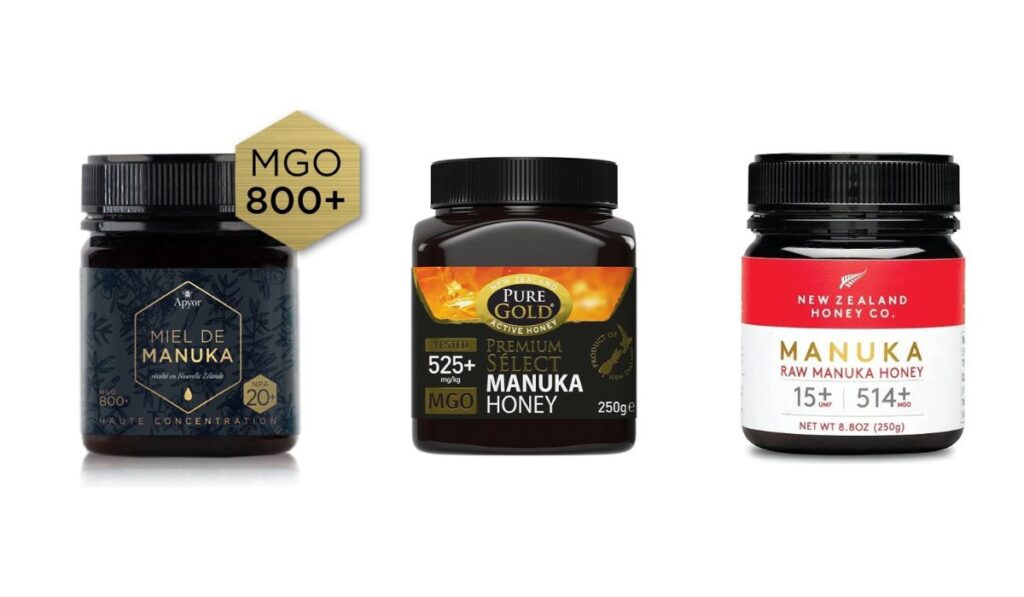Here at Cissi’s Market we’ve tasted and explored the world of culinary delights for years. I’ve come across a range of ingredients that are highly regarded by foodies and nutritionists alike, and one of them is Manuka honey. This type of honey, which originates from New Zealand, is widely known for its potent antibacterial properties and high nutritional value. However, not all Manuka honey is created equal. In this article, I’ll share my insights into how to choose the best Manuka honey.
Table of Contents
Check The Manuka Honey Origin
Manuka honey is native to New Zealand and is made from the nectar of the manuka tree. Look for a honey that is sourced from New Zealand and is certified by the Unique Manuka Factor Honey Association (UMFHA).
Check The Color and Texture
Manuka honey is typically darker in color and thicker in texture than other types of honey. The darker the honey, the higher the concentration of phenolic compounds and antioxidants.
Pay Attention On Packaging
Look for manuka honey that is packaged in a dark, opaque container to protect it from light and preserve its potency. Avoid honey that is packaged in clear or light-colored containers, as these can degrade the honey’s quality.

Understand the Unique Grading System
Manuka honey is graded based on its unique antibacterial activity. The active ingredient that gives Manuka honey its medicinal properties is methylglyoxal (MGO). Therefore, the higher the MGO rating, the higher the antibacterial potency. The grading system ranges from UMF (Unique Manuka Factor) to MGO, and KFactor.
UMF rating is the most popular grading system for Manuka honey. It ranges from 5+ to 20+. The higher the UMF rating, the higher the antibacterial potency. However, UMF is not the only grading system used for Manuka honey. The KFactor system measures the percentage of pollen in the honey, and MGO indicates the amount of MGO present.
The UMF (Unique Manuka Factor) rating is a measure of the potency and quality of manuka honey. It indicates the level of antibacterial activity present in the honey, with higher ratings indicating greater potency. Look for a UMF rating of 10 or higher for maximum health benefits.
MGO (methylglyoxal) is a compound found in manuka honey that is responsible for its antibacterial properties. The higher the MGO content, the greater the antibacterial activity. Look for a honey with an MGO content of at least 100 mg/kg.
Check the Label
When shopping for Manuka honey, the label is your best guide. You should look for a label that shows the UMF, MGO, or KFactor rating of the honey. The label should also indicate that the honey is 100% pure and unadulterated. Some labels may also specify the region or location where the honey was harvested, which can be an added advantage.
Price
High-quality manuka honey is a premium product and can be quite expensive. Be wary of products that seem too cheap, as they may not be genuine manuka honey or may be of low quality.
Avoid Cheap Brands
Manuka honey is not cheap. It is a premium product that requires a lot of work and resources to produce. Therefore, if you come across a brand that is offering Manuka honey at a low price, be wary. Cheap brands may be selling adulterated or diluted honey, which can be harmful to your health. To ensure that you get a high-quality product, stick to reputable brands that have been in the market for a while.
Consider the Purpose
Manuka honey is used for different purposes, ranging from culinary to medicinal. If you intend to use Manuka honey for culinary purposes, a lower UMF or KFactor rating may be suitable. However, if you are using it for medicinal purposes, you may need a higher UMF rating to get the desired results.
Storage
Manuka honey should be stored in a cool, dry place away from direct sunlight. Exposure to sunlight can cause the honey to lose its potency. Additionally, Manuka honey should not be stored in the fridge, as it can crystallize and harden, making it difficult to use.
Manuka Honey Health Benefits
Manuka honey, a type of monofloral honey derived from the manuka tree, has gained attention for its antimicrobial and antioxidant properties. The manuka tree, which is native to New Zealand and eastern Australia, has been traditionally used for its wound-healing properties. Manuka honey has been used to treat infections, wounds, burns, and ulcers.
Recent studies have investigated the bioactive compounds in manuka honey and their biological activities, which could lead to the development of new bio-pharmaceutical products with antimicrobial and wound-healing properties.
This review focuses on the phytochemical composition and biological effects of manuka honey, including its antimicrobial activity and impact on wound treatments, as well as its antioxidant capacity.
Conclusion
In summary, when choosing manuka honey, look for a high UMF rating, a significant MGO content, New Zealand origin, dark color and thick texture, dark packaging, and reasonable price. By following these tips, you can be confident in choosing a high-quality manuka honey that will provide you with the health benefits you are looking for. With the right Manuka honey, you can enjoy its numerous health benefits while indulging in its delicious taste.



